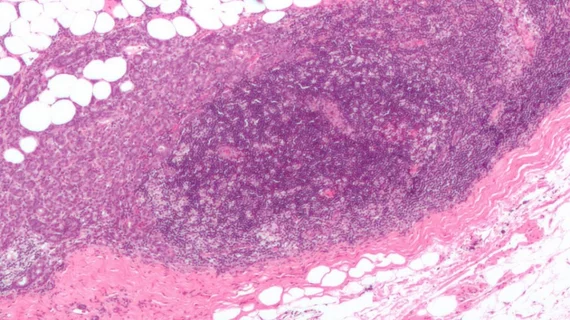PET tracer IDs estrogen receptor variation in breast cancer patients
A team of Dutch researchers utilized a PET tracer to distinguish differences in estrogen receptor (ER) expression in metastatic breast cancer patients, according to a recent Journal of Nuclear Medicine study. Findings may enhance treatment for these patients.
To determine the variability in ER expression, Geke A.P. Hospers, MD, PhD, and colleagues used fluorine-18-fluoroestradiol (18F-FES) PET in 91 patients with metastatic breast cancer. The 18F-FES uptake was measured in 1,617 metastases, as well as normal tissue.
"The results showed that approximately 50 percent of the patients had one or more estrogen-receptor negative lesions, while the primary tumor was estrogen-receptor positive," said Hospers, professor of medical oncology at the University of Groningen in the Netherlands, in a statement. "This heterogeneity of ER expression is, therefore, really common, and it likely affects treatment outcome."
Authors noted the 18F-FES uptake was higher in bone metastases than that measured in the lymph node and lung variety. Results also showed background uptake to vary by organ, with the highest recorded in the skeleton.
Hospers and colleagues performed cluster analysis on imaging characteristics and the metastatic sites to reveal three distinct patterns of patients with ER positive breast cancer. These patterns may be helpful in personalizing treatment, authors wrote.
“The knowledge of this heterogeneity by means of 18F-FES PET may support future specific treatment of metastasis,” Hospers said in the statement. “For example, one ER negative lesion could be treated by radiotherapy, while the endocrine treatment is continued for the other ER positive lesions.”

